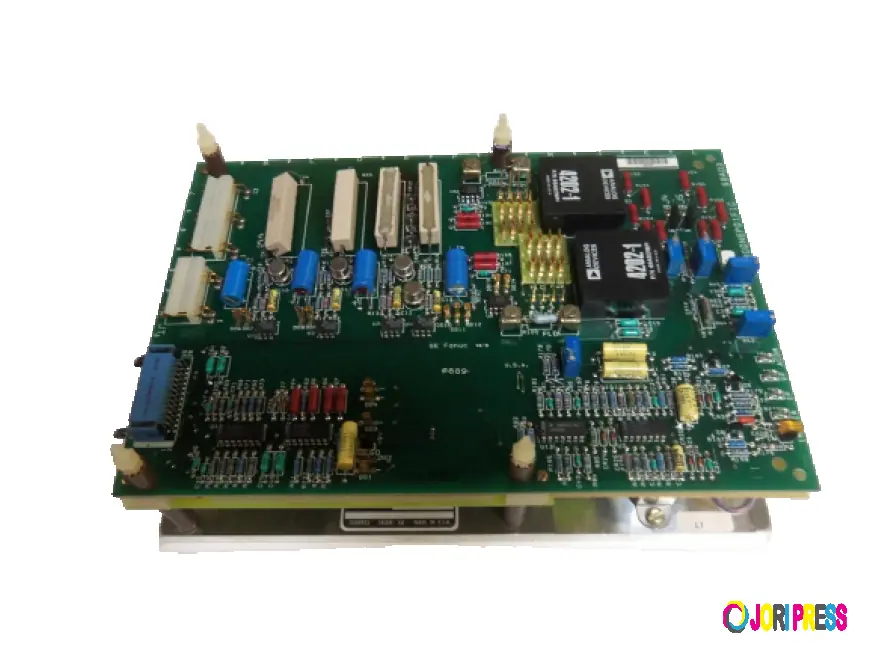Why the Field Exciter Matters in GE Mark IV Applications
Discover why the field exciter is crucial for stable voltage and reliable performance in GE Mark IV turbine control systems

In the world of power generation, especially in gas and steam turbine operations, precise control and system reliability are essential. One critical component that supports both these goals is the field exciter. In GE Mark IV turbine control systems, the field exciter plays a pivotal role in maintaining generator stability, ensuring responsive control, and protecting critical equipment. Despite often being overlooked, this module is fundamental to the safe and efficient operation of turbine systems.
Overview of the GE Mark IV System
Introduced in the 1980s, the GE Mark IV is a microprocessor-based control system designed to automate the operation of gas and steam turbines. It marked a shift from analog to digital turbine control, providing better fault diagnostics, enhanced safety interlocks, and more precise performance tuning.
The Mark IV is built around a modular architecture, with dedicated components managing tasks such as speed control, temperature monitoring, fuel management, and voltage regulation. One of the most vital components in this architecture is the field excitation module, which controls generator output by regulating the magnetic field.
What Is a Field Exciter?
A field exciter is an electrical device responsible for supplying direct current (DC) to the rotor winding of a generator. This DC current generates a magnetic field, which is necessary for voltage generation in the stator windings of the generator. The stronger the field current, the higher the generator’s voltage output.
In turbine systems, particularly those controlled by the GE Mark IV, the exciter must respond quickly to load changes while maintaining voltage stability. A malfunctioning exciter can lead to voltage fluctuations, generator trips, or inefficient power output.
The Role of the Field Exciter in Mark IV Applications
The field exciter module in a Mark IV system integrates closely with the control logic to ensure real-time voltage regulation and dynamic stability. Here’s why it matters:
1. Voltage Regulation
One of the exciter’s main tasks is to maintain a stable output voltage as generator load conditions change. Whether the demand increases or decreases, the field exciter adjusts the excitation current to compensate, helping to maintain a consistent voltage level.
2. System Protection
In the event of overvoltage, undervoltage, or abnormal load conditions, the exciter module works with the turbine control system to initiate corrective actions. This may include reducing excitation or triggering system shutdowns to protect equipment from damage.
3. Load Sharing and Synchronization
In systems where multiple generators operate in parallel, the exciter ensures proper synchronization and load sharing. It keeps the generator's voltage and reactive power in balance with other units, supporting grid stability and operational efficiency.
4. Startup and Shutdown Operations
The exciter also plays a key role during turbine startup and shutdown procedures, when voltage levels must be precisely controlled to prevent equipment stress or failure.
Importance in Legacy Systems
Even though GE has released newer control systems, many industrial facilities and power plants still rely on GE Mark IV due to its proven reliability and robust design. The field exciter module is central to extending the life and functionality of these systems.
Regular maintenance, calibration, and monitoring of the exciter can help prevent failures and avoid costly downtime. In many plants, the exciter is part of a preventive maintenance program, where its performance is routinely tested to ensure compliance with operational standards.
Maintenance and Operational Tips
To maintain optimal exciter performance in Mark IV systems:
-
Conduct routine testing to monitor voltage response and stability.
-
Check connections and components for signs of wear or overheating.
-
Replace aging components with compatible modules or refurbished units tested to original specifications.
-
Ensure proper integration with other control system modules to avoid miscommunication or fault propagation.
Conclusion
The field exciter may not be the most visible component in a GE Mark IV turbine control system, but its role is critical. By ensuring stable generator output, supporting dynamic load response, and protecting valuable assets, the exciter contributes directly to the efficiency and reliability of power generation systems.
In both legacy and active turbine installations, understanding the function and value of the exciter is essential for plant operators, technicians, and engineers seeking long-term performance and operational excellence.
What's Your Reaction?
 Like
0
Like
0
 Dislike
0
Dislike
0
 Love
0
Love
0
 Funny
0
Funny
0
 Angry
0
Angry
0
 Sad
0
Sad
0
 Wow
0
Wow
0
















































